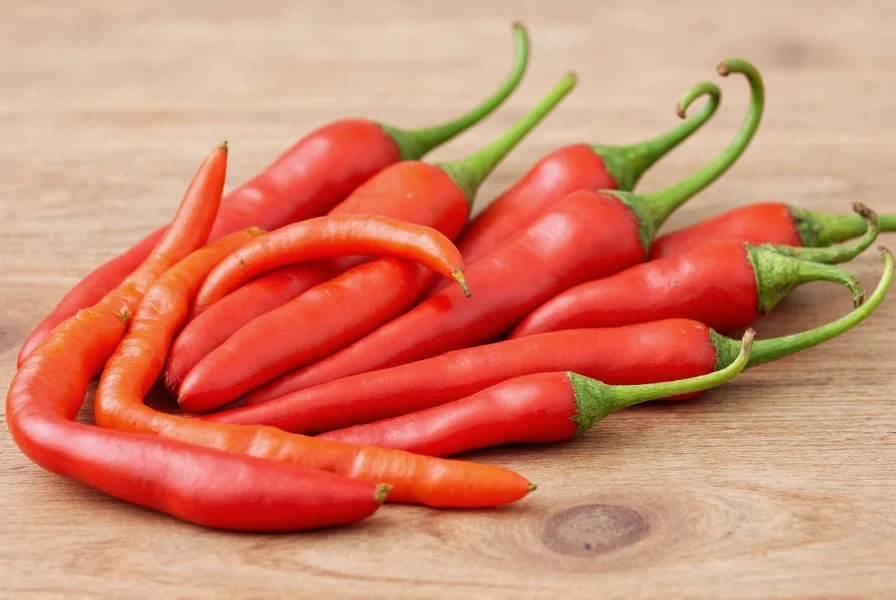Yes, paprika is bad for dogs and should be avoided. This common spice contains capsaicin and other compounds that can cause gastrointestinal distress, oral irritation, and potentially more serious health issues in dogs. Even small amounts can lead to vomiting, diarrhea, and discomfort. While not usually life-threatening in small quantities, paprika exposure requires monitoring and potentially veterinary care depending on the amount consumed.
As a pet owner, discovering your dog has eaten something unexpected can be alarming. When it comes to paprika specifically, understanding the risks and appropriate responses is crucial for your canine companion's wellbeing. This comprehensive guide examines why paprika poses dangers to dogs, the symptoms to watch for, and the steps you should take if your dog has consumed this common kitchen spice.
Why Paprika Is Harmful to Dogs
Paprika, derived from ground peppers, contains several components problematic for canine digestion and health. The primary concern is capsaicin—the compound responsible for the spicy sensation in chili peppers. While paprika is milder than many hot peppers, it still contains enough capsaicin to cause significant discomfort in dogs.
Dogs lack the biological receptors that help humans tolerate spicy foods, making them particularly sensitive to capsaicin's effects. When dogs consume paprika, it can trigger:
- Irritation of the mouth, throat, and digestive tract
- Inflammation of the gastrointestinal lining
- Increased salivation and pawing at the mouth
- Disruption of normal digestive processes
Additionally, many commercial paprika products contain additives like salt, garlic powder, or onion powder—ingredients that are independently toxic to dogs even in small amounts.

Symptoms of Paprika Exposure in Dogs
If your dog has consumed paprika, watch for these symptoms, which typically appear within 30 minutes to 2 hours:
| Symptom Severity | Physical Symptoms | Behavioral Changes |
|---|---|---|
| Mild Exposure | Drooling, lip licking, mild vomiting, soft stool | Restlessness, pawing at mouth, increased thirst |
| Moderate Exposure | Frequent vomiting, diarrhea, abdominal pain | Whining, hiding, reluctance to eat or drink |
| Severe Exposure | Bloody vomit or stool, dehydration, difficulty breathing | Lethargy, collapse, tremors |
The severity depends on multiple factors including your dog's size, the amount of paprika consumed, and whether it was pure paprika or part of a seasoned dish containing other harmful ingredients.
How Much Paprika Is Dangerous for Dogs
There's no universally safe amount of paprika for dogs, but the risk increases with quantity:
- Small dogs (under 20 lbs): As little as 1 teaspoon can cause significant discomfort
- Medium dogs (20-50 lbs): 1-2 tablespoons may trigger symptoms
- Large dogs (50+ lbs): 2-3 tablespoons could cause issues
Remember that commercial spice blends often contain additional harmful ingredients. Paprika used in cooking might be combined with garlic, onion, or excessive salt—all dangerous for dogs. Even if the paprika amount seems small, these additional components increase the risk substantially.
Immediate Steps to Take If Your Dog Eats Paprika
If you discover your dog has consumed paprika, follow these steps:
- Remain calm—your anxiety can stress your dog further
- Remove any remaining paprika from your dog's reach
- Do not induce vomiting unless directed by a veterinarian
- Offer small amounts of water to help dilute the spice
- Provide a small portion of bland food like plain boiled chicken and rice
- Monitor closely for developing symptoms over the next 24 hours
Contact your veterinarian immediately if your dog shows severe symptoms or if you know they consumed a significant amount. When calling, have this information ready:
- Your dog's weight and breed
- Approximate amount of paprika consumed
- Time of consumption
- Any other ingredients involved (garlic, onion, etc.)
- Current symptoms your dog is experiencing
Safe Flavor Alternatives for Dogs
If you're looking to add flavor to your dog's food, consider these safe alternatives to paprika:
- Parsley—fresh or dried, helps with breath and provides nutrients
- Basil—contains antioxidants and has anti-inflammatory properties
- Cinnamon—in very small amounts (1/8 teaspoon for large dogs), may help regulate blood sugar
- Turmeric—when combined with black pepper and healthy fat, has anti-inflammatory benefits (consult your vet first)
- Unsalted chicken or beef broth—adds flavor without harmful ingredients
Always introduce new flavors gradually and in small quantities to monitor for any adverse reactions. Remember that dogs don't require seasoned food—plain, balanced nutrition is typically best for their digestive systems.
Preventing Future Paprika Exposure
Prevention is always better than treatment when it comes to keeping your dog safe from harmful spices:
- Store spices securely in closed cabinets out of your dog's reach
- Avoid seasoning your dog's food with human spices
- Be cautious when cooking—keep dogs out of the kitchen during food preparation
- Train your dog the "leave it" command to prevent them from eating dropped food
- Inform all household members about foods that are dangerous for dogs
Remember that dogs have different digestive systems than humans. What seems mildly seasoned to you might be overwhelming for your pet. When in doubt about any food item, consult your veterinarian before sharing it with your dog.
When to Seek Veterinary Care
While mild paprika exposure might resolve with home monitoring, certain situations require immediate veterinary attention:
- Symptoms persist beyond 12-24 hours
- Vomiting or diarrhea becomes severe or contains blood
- Your dog shows signs of dehydration (dry gums, sunken eyes, lethargy)
- Difficulty breathing or excessive panting occurs
- Your dog has consumed paprika along with other toxic ingredients like onion or garlic
- Your dog is a small breed or puppy (more vulnerable to complications)
Early intervention can prevent minor issues from becoming serious health problems. Don't hesitate to contact your veterinarian if you're concerned about your dog's condition after paprika exposure.
Frequently Asked Questions
Can a small amount of paprika kill a dog?
While extremely unlikely to be fatal from paprika alone in small amounts, even minimal exposure can cause significant discomfort and digestive issues. The greater risk comes when paprika is combined with other toxic ingredients like onion or garlic powder, which can be dangerous in small quantities.
How long do paprika symptoms last in dogs?
Mild symptoms typically resolve within 12-24 hours with proper care. More severe reactions may last several days, especially if complications like dehydration develop. If symptoms persist beyond 24 hours or worsen, veterinary care is recommended.
Is smoked paprika more dangerous for dogs than regular paprika?
Smoked paprika contains the same capsaicin compounds as regular paprika and poses similar risks. The smoking process doesn't reduce the harmful components for dogs. Some smoked paprika varieties may contain additional additives that could increase the risk.
Can dogs develop long-term issues from eating paprika?
Occasional mild exposure typically doesn't cause long-term problems. However, repeated exposure to spicy foods can lead to chronic gastrointestinal issues, including inflammatory bowel disease. Severe acute reactions could potentially cause temporary damage to the digestive tract lining.
What's the difference between paprika and chili powder for dogs?
Chili powder is generally more dangerous as it contains higher concentrations of capsaicin and often includes additional toxic ingredients like garlic and onion powder. While both are harmful, chili powder typically causes more severe reactions due to its higher spice content and additional harmful components.











 浙公网安备
33010002000092号
浙公网安备
33010002000092号 浙B2-20120091-4
浙B2-20120091-4